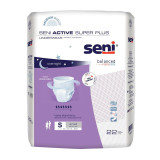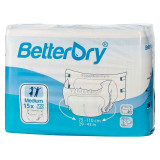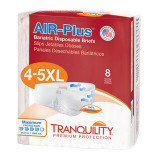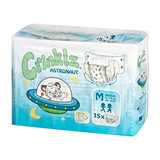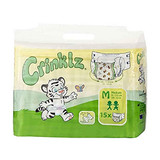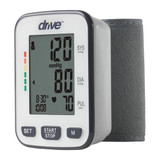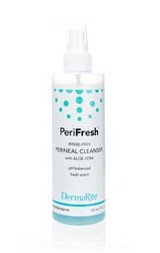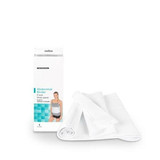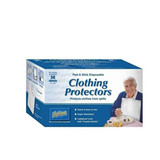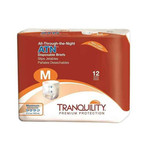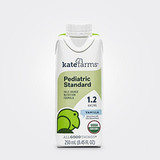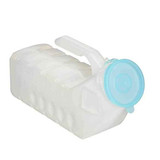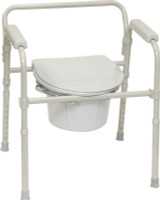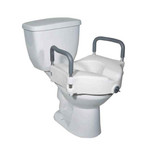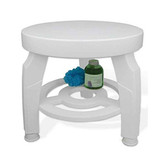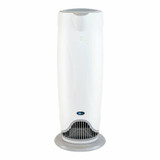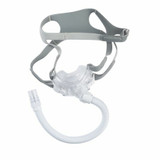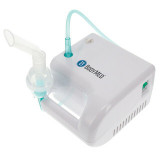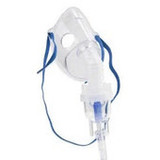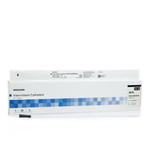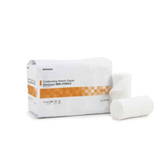
The Caregiver Guide - How to Manage COPD
COPD, or Chronic Obstructive Pulmonary Disease, is a group of chronic lung conditions that causes breathing difficulties. According to a Centers for Disease Control and Prevention (CDC) report, approximately 16 million Americans have been diagnosed with COPD, but millions more may have the disease without knowing it. Over the last few decades, the prevalence has been rising, with World Health Organization (WHO) data projecting it to be the third leading cause of death globally by 2030.
Living with the condition is challenging as it often leads to shortness of breath, chronic cough, or fatigue, which impacts quality of life. People are also at a higher risk of developing other health complications, such as respiratory infections and heart problems, further adding to the burden of managing their condition.
For caregivers, the responsibility of caring for a senior with COPD can be emotionally and physically demanding. The constant need to provide support, monitor symptoms, and assist with daily activities can place a significant burden on caregivers, impacting their own well-being and quality of life.
What is Chronic Obstructive Pulmonary Disease
COPD encompasses several progressive lung diseases, including chronic bronchitis and emphysema. Chronic bronchitis involves inflammation and narrowing of the airways, leading to excessive mucus production and coughing. Emphysema, on the other hand, damages the air sacs in the lungs responsible for oxygen exchange, resulting in reduced lung function.
The primary cause is long-term exposure to harmful substances such as cigarette smoke, air pollution, and occupational hazards like chemicals or dust. Over time, this exposure leads to inflammation and damage within the lungs, causing them to lose their elasticity and ability to transfer oxygen into the bloodstream efficiently.
As the disease progresses, individuals may experience shortness of breath (particularly during physical activity), wheezing, chest tightness, chronic cough with sputum production, frequent respiratory infections, fatigue, and unintended weight loss.
Causes and Risk Factors
One of the primary causes of COPD is smoking. Cigarettes contain harmful chemicals that damage the airways and lungs over time, leading to inflammation and narrowing of the air passages. It's estimated that around 80-90% of cases are directly related to smoking. Note that not all smokers will develop the condition.
Another major factor is the environment. Prolonged exposure to pollutants such as dust, fumes, chemicals, and secondhand smoke contributes to lung damage and increases the risk of developing the disease.
Genetic predisposition has also been identified as a risk factor. Certain individuals may have genetic variations that make them more susceptible to developing the disease when exposed to harmful environmental factors or tobacco smoke.
Recognizing the Symptoms
There are several typical symptoms that can vary in severity among individuals with COPD. Some may experience mild symptoms initially, while others may have more pronounced symptoms that worsen over time. This makes it a little more challenging to recognize the signs early on, but look out for these common problems:
Shortness of breath. This is one of the most common symptoms, especially during physical activity or exertion. People with COPD may also experience chronic coughing, which produces mucus or phlegm. This persistent cough is usually worse in the morning.
Wheezing. You may hear a high-pitched whistling sound when the person breathes. This occurs due to narrowed airways and can be particularly noticeable during exhalation.
Chest tightness or a feeling of pressure in the chest area. This sensation makes it difficult to take deep breaths and may cause discomfort or pain.
Differentiating Between COPD and Asthma
While they share some similarities, it is vital to understand the key differences between these two conditions.
Similarities
· Symptoms. Both conditions can cause shortness of breath, wheezing, coughing, and chest tightness.
· Triggers. Certain triggers like allergens, pollutants, and respiratory infections can exacerbate symptoms in both illnesses.
· Treatment: Inhalers and medications are commonly used to manage symptoms in both conditions.
Differences
· Underlying Causes. Asthma is primarily caused by inflammation of the airways due to allergies or irritants. In contrast, COPD is mainly caused by long-term exposure to harmful substances like tobacco smoke or environmental pollutants.
· Progression. Asthma symptoms can vary over time and may come and go in episodes or attacks, while COPD is a progressive disease characterized by a gradual decline in lung function.
· Age of Onset. Asthma often develops during childhood or early adulthood, whereas COPD typically occurs later in life after years of exposure to risk factors.
· Reversibility. Asthma symptoms are usually reversible with appropriate treatment, whereas the lung damage caused by COPD is generally irreversible.
· Because the prognosis for people with COPD is vastly different from that of asthma sufferers, it is crucial to understand these differences to ensure an accurate diagnosis and appropriate management plan.
Treatment Options for Managing COPD
There is no cure for this condition, but treatment can slow the progression of the condition and reduce the risk of life-threatening complications. The goal of treatment is to alleviate symptoms, improve lung function, and enhance the overall quality of life for those living with the condition. Treatment options include:
· Medication. Healthcare professionals may prescribe medication to help control symptoms and reduce inflammation in the airways. These include bronchodilators, which help relax the muscles around the airways, corticosteroids which reduce inflammation and antibiotics.
· Inhalers. They allow targeted medication delivery directly into the lungs, providing quick relief during flare-ups and helping to control symptoms daily.
· Pulmonary rehabilitation. These programs involve exercise training, breathing techniques, education on managing symptoms, and emotional support. Pulmonary rehabilitation helps build strength and endurance while also providing strategies for coping with breathlessness.
· Lifestyle changes. Quitting smoking is essential as it is the leading cause of COPD. Avoiding exposure to environmental pollutants such as secondhand smoke or occupational hazards is also important. Regular physical activity, a healthy weight, and a balanced diet can further support lung function.
Living with COPD
Living with this condition can be challenging, but with the right strategies and support, it’s possible to manage symptoms daily and improve the quality of life. As we spend most of our time at home, we must start managing symptoms there first. This includes creating a clean and smoke-free environment, ensuring proper ventilation, and avoiding exposure to pollutants or irritants that can exacerbate symptoms.
Arrange regular follow-up appointments with a healthcare professional to get vaccinated against respiratory infections, assess the disease's progression, adjust medications, and review lifestyle factors and pulmonary rehabilitation programs. Also, consider joining a support group or online community for tips, advice, and emotional support.
In conclusion, Chronic Obstructive Pulmonary Disease would place an extra burden on the already challenging role of being a caregiver, but it’s not all doom and gloom. Being empowered to recognize the symptoms and begin treatment as soon as possible will lighten this additional burden considerably.
And, remember, as we have said so many times, don’t endure this burden alone. There is a lot of support out there if you ask for it. At LL Medico, we have supported caregivers with quality senior care supplies at competitive prices for over 25 years. Whether you require respiratory care items, personal care products or adult diapers, LL Medico’s set-and-forget Autoship feature will help you overcome the stress of managing supplies.










